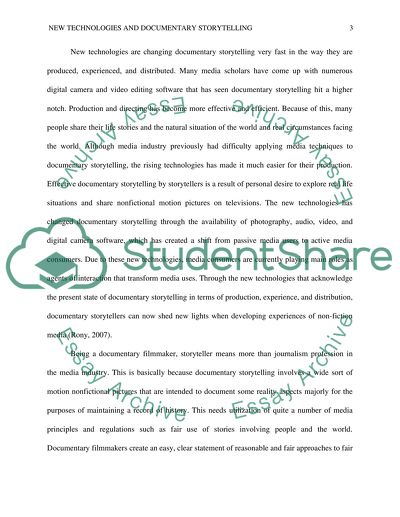Cite this document
(“New Technologies and Documentary Storytelling Essay”, n.d.)
New Technologies and Documentary Storytelling Essay. Retrieved from https://studentshare.org/visual-arts-film-studies/1475757-new-technologies-and-documentary-storytelling
New Technologies and Documentary Storytelling Essay. Retrieved from https://studentshare.org/visual-arts-film-studies/1475757-new-technologies-and-documentary-storytelling
(New Technologies and Documentary Storytelling Essay)
New Technologies and Documentary Storytelling Essay. https://studentshare.org/visual-arts-film-studies/1475757-new-technologies-and-documentary-storytelling.
New Technologies and Documentary Storytelling Essay. https://studentshare.org/visual-arts-film-studies/1475757-new-technologies-and-documentary-storytelling.
“New Technologies and Documentary Storytelling Essay”, n.d. https://studentshare.org/visual-arts-film-studies/1475757-new-technologies-and-documentary-storytelling.


